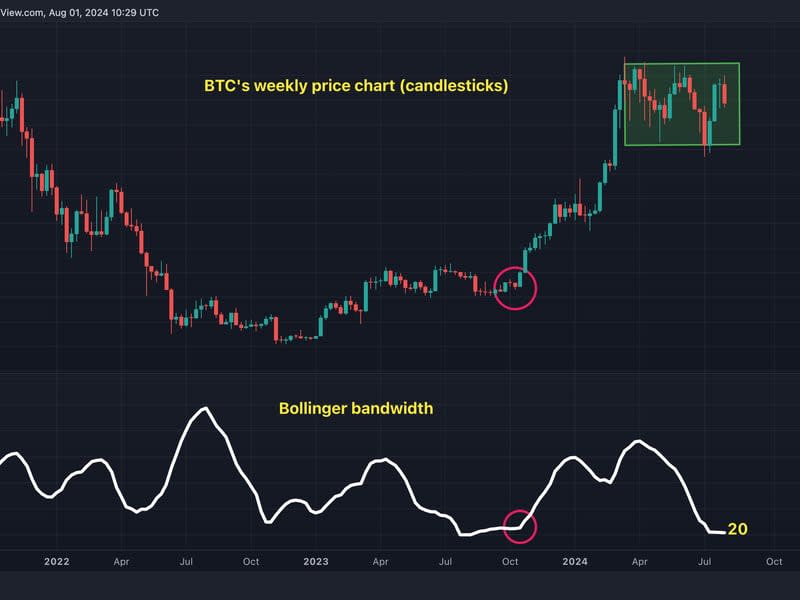Bitcoin Indicator That Forewarned Late 2023 Volatility Explosion Is Lighting Up Again
08/01/2024 20:38
Bitcoin's Bollinger bandwidth has narrowed to levels that have historically preceded volatility explosions.
The gap between bitcoin's volatility bands has narrowed to 20%.
A similar reading preceded Bitcoin's late 2023 surge.
Traders bored of bitcoin {{BTC}}'s range-ridden days might want to return to their computer screens. An indicator called "Bollinger bandwidth" that successfully predicted the late 2023 volatility boom is glowing brightly again.
Bollinger bands are volatility bands placed two standard deviations above and below the 20-day/week simple moving average of an asset's price. The bandwidth, an unbound oscillator, is derived by dividing the spread between the volatility bands by the 20-period SMA.
Bitcoin's Bollinger bandwidth has declined to 20% on the weekly chart, a level last seen days before BTC exited its then multi-month trading range of $25,000 to $32,000 in late October. Prices topped the $40,000 mark by year-end and rose to record highs above $70,000 in March this year.
The latest reading of 20% follows four months of trading between $60,000 and $70,000, barring occasional brief dips to $55,000.
The bandwidth flashed a similar reading ahead of the volatility explosions in November 2018, October 2016, mid-105 and mid-2012, as CoinDesk discussed in October.
Volatility is said to be mean-reverting. So, a narrower bandwidth, representing price stability, often precedes a breakout in either direction or burst of volatility. On the flip side, high bandwidth indicates a cooling period on the horizon.
